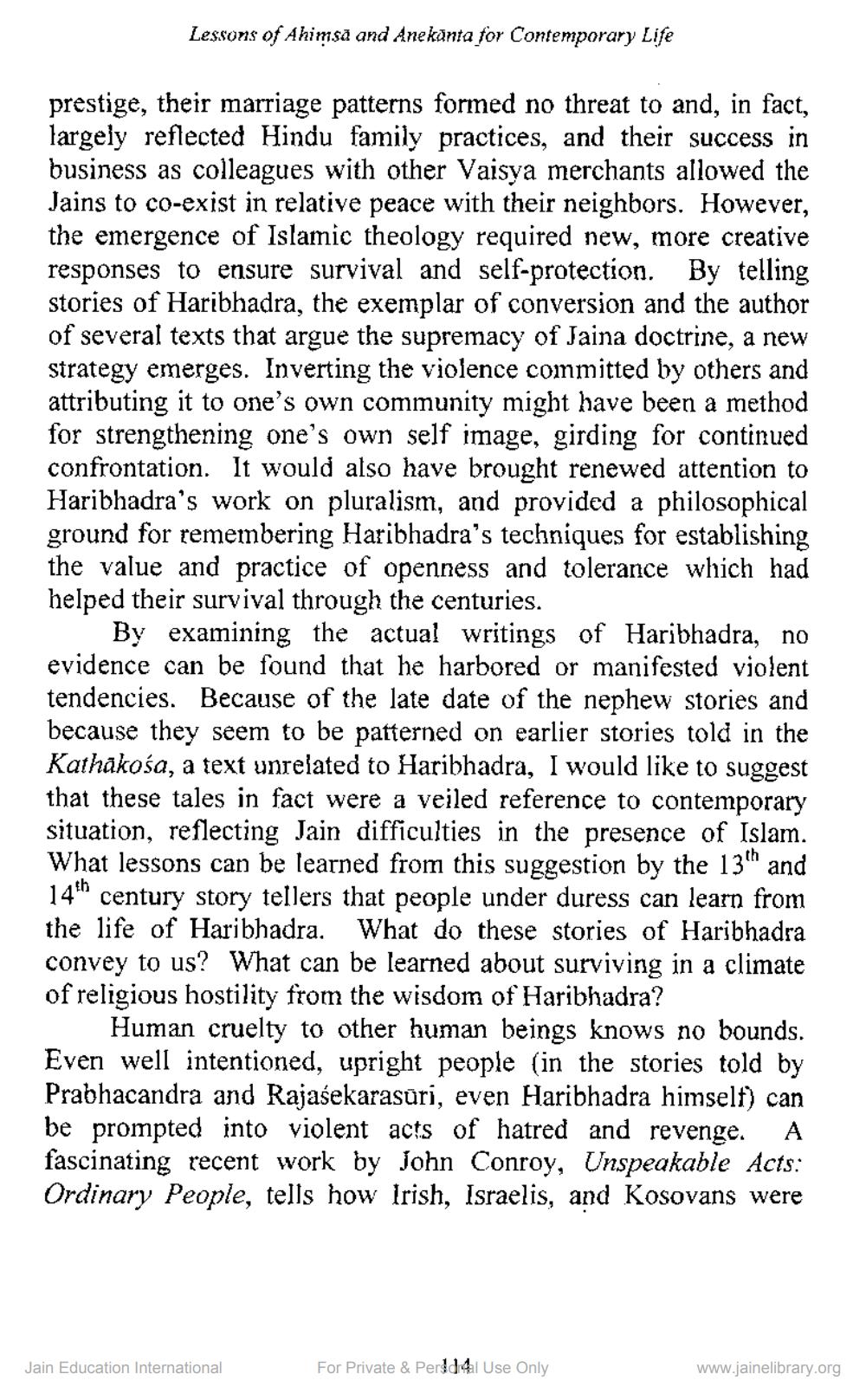________________
Lessons of Ahimsa and Anekānta for Contemporary Life
prestige, their marriage patterns formed no threat to and, in fact, largely reflected Hindu family practices, and their success in business as colleagues with other Vaisya merchants allowed the Jains to co-exist in relative peace with their neighbors. However, the emergence of Islamic theology required new, more creative responses to ensure survival and self-protection. By telling stories of Haribhadra, the exemplar of conversion and the author of several texts that argue the supremacy of Jaina doctrine, a new strategy emerges. Inverting the violence committed by others and attributing it to one's own community might have been a method for strengthening one's own self image, girding for continued confrontation. It would also have brought renewed attention to Haribhadra's work on pluralism, and provided a philosophical ground for remembering Haribhadra's techniques for establishing the value and practice of openness and tolerance which had helped their survival through the centuries.
By examining the actual writings of Haribhadra, no evidence can be found that he harbored or manifested violent tendencies. Because of the late date of the nephew stories and because they seem to be patterned on earlier stories told in the Kathakośa, a text unrelated to Haribhadra, I would like to suggest that these tales in fact were a veiled reference to contemporary situation, reflecting Jain difficulties in the presence of Islam. What lessons can be learned from this suggestion by the 13th and 14h century story tellers that people under duress can learn from the life of Haribhadra. What do these stories of Haribhadra convey to us? What can be learned about surviving in a climate of religious hostility from the wisdom of Haribhadra?
Human cruelty to other human beings knows no bounds. Even well intentioned, upright people in the stories told by Prabhacandra and Rajasekarasuri, even Haribhadra himself) can be prompted into violent acts of hatred and revenge. A fascinating recent work by John Conroy, Unspeakable Acts: Ordinary People, tells how Irish, Israelis, and Kosovans were
Jain Education International
For Private & Perdd4.1 Use Only
www.jainelibrary.org




